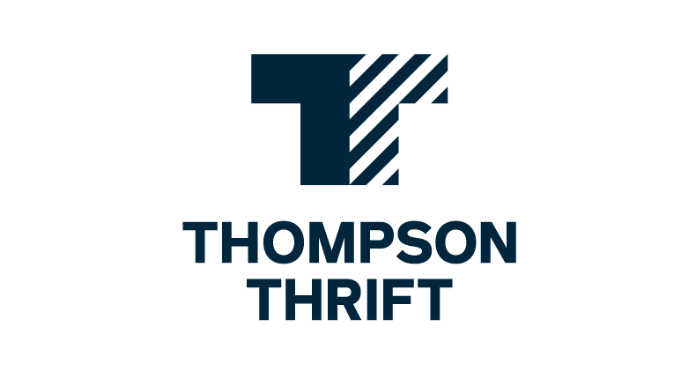Because multifamily marketing directors have limited budgets, they hope the resultant data and their call-tracking systems, which allow them to listen to calls and separate qualified from unqualified leads, will give them a clear view of where to put their 2016 advertising dollars.
Technology is supposed to make our lives easier, but in today’s world of multiple ILS, each with different options, levels and upsells, apartment operators agree that marketing apartments ten or twenty years ago was a much simpler task.
“If you are a CIO or CMO today, figuring out where to put your ad dollars is very confusing, much more so than it was and what is right or wrong is much less obvious than five or ten years ago. There’s more choices, more options, more data and yet, in some ways, less information,” said Donald Davidoff, former senior VP at Archstone, where he lead the development and implementation of LRO, the industry’s first automated, demand forecasting and price optimization system, and today serves as owner of pricing, sales, marketing, and technology consultancy d2Demand Solutions in Littleton, Colo.
“To understand what’s working and what’s not, you must constantly test and measure. You have to do the analytics. There is no short cut,” said Davidoff.
First of all, what works varies by market. “No ILS is great everywhere. They all end up with strengths and weaknesses in different markets and across different product types,” said Davidoff.
Laura Bartz, director of marketing for Western National Group, a third-party apartment management firm based in Southern California, notes that in places with dense populations, like Anaheim, Calif., her company must go to higher levels within each ILS to get results.
But ILS results are based on their own search engine optimization (SEO) and search engine marketing (SEM). “So it comes down to how good their SEO is in real time, because what’s good today could be bad tomorrow. If Google all of a sudden changes its algorithms, an ILS that was great isn’t so good anymore. Figuring out which sources will lead to the most leases is like having to build a three-dimensional jigsaw puzzle where the shapes and sizes of the pieces change all the time. It’s really that complex,” Davidoff said.
Company website versus ILS
Leads from a company’s own website convert to leases at a higher rate than ILS leads, since ILS displays competing rentals right next to each other.
This is where the larger companies like the apartment REITs have an advantage over the smaller firms. They build their own websites that read data from their property management (PMS) and revenue management systems.
“At Archstone, we built our own website and it knew what was available and when, based on our PMS, and the pricing was based on data in the PMS because it was the system of record for the pricing and the leasing,” said Davidoff.
The smaller companies that can’t afford to build their own websites outsource their SEO to other companies.
But either way, notes Davidoff, the property website serves one prospect’s journey, while the ILS serves another. The latter outperforms when prospects search Google for big terms like “apartments in Atlanta” or “Denver rental housing.”
“Google tries to give the user an experience that’s relevant, so if they use a lot of big geographic terms, Google favors sites that have lots and lots of data. I don’t care how big you are, no company website is going to have as much content for the whole city of Atlanta or Denver as an ILS.
“Although it might result in a lower conversion rate than I would get on my property website, if I want to fish in the pond of people who are starting with a broad search, then I want to participate with some of the ILS,” said Davidoff, who thinks more is better when it comes to the number of ILS to utilize.
“I did some very sophisticated stuff back in my day at Archstone and, because we were on LRO, more guest cards, more leads let LRO see more demand and raise the overall price, so I was able to calculate exactly what the lead was worth and, based on a multiple, was willing to pay a certain fraction of what I knew the lead was worth to me.
“And, as long as a lead source would deliver a cost per lead under a certain dollar amount, I would buy it, even if property occupancy was good, because I had proven to myself that those leads would generate higher rents,” explained Davidoff.
“Now if you are not currently using a pricing system that would help you do that, or you don’t believe in that philosophy, then I definitely would cull and reinvest each six months or year and look at my cost per lead and cost per lease and calculate what my bottom is, trying to save money or invest it somewhere else that would give me a lower cost per lead. Those are the two strategies. Cull and reinvest is one strategy and buy under a certain dollar threshold in order to drive up and through a pricing system to increase rents is the other,” he said.
Some companies believe more isn’t always better when it comes to the number of ILS, if monitoring shows what they have is already working.
“Our budgets are more conservative and we are highly selective with our marketing spend. We will test the waters with a source in a particular area or property when the need arises. In markets that are super competitive, it may become necessary to use a number of ILS,” said Bartz, adding that monitoring the ILS effectiveness is something Western National does regularly.
Bartz notes that recent mergers in the ILS world and some new players, like Zillow, have benefitted her company, stretching Western National’s advertising dollars further than in the past.
Zillow, which also owns Hotpads and Trulia, only got serious about multifamily two years ago, according to Zillow Chief Business Officer Greg Schwarz during the first ever Zillow Group Multifamily Forum held in New Orleans in late October.
Meanwhile, Apartments.com and Apartfinder.com are now one, owned by CoStar, and RentPath, Inc. operates Apartment Guide, Rent.com and Rentals.com.
The attribution problem
Savvy marketers know the importance of tracking cost per lead and cost per lease and both can be costly.
“I haven’t really been involved in analyzing (those metrics) for about three years, but I know the amount varies dramatically by source. There are sources like Craigslist, which are ‘free’ but they usually involve significant labor and/or use of some software to make the process more efficient,” said Davidoff, who is a fan of pay-for-performance, where the operator only pays for leads that end up converting to leases.
“I like my lead sources to have some skin in the game for my success. That approach does make marketing spend vary by month due to seasonality of leasing, and some managers prefer the certainty of a fixed price per month, especially in the fee world,” he said.
The downside is that pay per performance relies on accurate call tracking and attribution. But attributing leads and leases to their correct source can be an operator’s nightmare in today’s online world.
“There is no perfect answer, so anyone that’s looking for a perfect understanding of attributions is never going to get there. You have to accept that you’re going to make some business decisions off some fuzzy analysis no matter what,” said Davidoff.
Attributions are tough because perspective renters are likely to shop multiple sites before actually calling or visiting a property, but they also are likely to credit the last site they happened upon during their research, although they may have first found the property on a previous site.
When a prospect writes on a guest card they found a property on the Internet and attributes that last source, the operator must pay that source a referral fee. Yet, after they move in, the operator may receive a bill for the same referral from a completely different source. This usually happens because the prospect can’t remember the first site where they actually heard about the property.
Western National uses Yardi’s Lead Tracking Solutions, including Popcard, which uses tracking numbers and emails to trace each source and integrate them into Yardi.
“As the lead progresses to the lease, the incoming source is identified and attached to the guest card so we can tie them together,” said Bartz.
Once leads are attributed to the right source, there is still the problem of attributing the lease to the correct source when the lead also touched multiple sources.
Davidoff knows of three ways of attributing a lease when you see that there are multiple leads.
“You can do a last-in, a first-in or an average. I could say I’m going to give credit to the first source that I got the lead from or I’m going to give credit to the last source or I’m going to average it—then, using three sources as an example, each gets credit for a third,” said Davidoff, who did an analysis when he was at Archstone to determine which of the three ways was the best and found that they came out within a percent of each other.
“As long as you’re looking at a large enough data sample I actually wouldn’t worry about methodology, because I don’t think it makes that much of a difference,” he said.
Will ILS continue to thrive?
Mark Juleen, VP of marketing at Indianapolis-based J.C. Hart, where he oversees a portfolio of 3,200 units in 15 communities, believes the ILS model, as it stands today, is dying. He first said it several years ago to generate controversy, but today believes it may actually come true. He made the same prediction years back as it related to print.
Juleen is a self-professed idea nerd in the apartment marketing space and, until recently, made online predictions during one-minute podcasts he calls “Marketing Minute.”
On one such podcast earlier this year, Juleen held up an impressive and probably costly to produce video brochure sent to his company by Apartments.com, which recently was purchased by the CoStar Group, pronouncing print is dead, replaced by the Apartminternet.
In conjunction with the slick B2B paper brochure, Co-Star launched a television ad staring actor Jeff Goldblum as Silicon Valley maverick Brad Bellflower touting Apartments.com’s Apartminternet as the place to find your next rental home, with the slogan “Change your apartment, change the world.” And, along with a brand new logo, the ILS even offered a year’s free rent for posting a review on its site.
“(It’s) going to be tough to digest for some of you and some of you are going to disagree, but ILS doesn’t just need a new facelift such as what Apartments.com is doing. It needs an overhaul in the way people interact with ads. So that’s what needs to happen to truly change customers behavior in utilizing these sites to find what they need,” he said.
Davidoff is of similar mind. “I see the ILS as pretty mature and what innovations I have seen are pretty minor at the margin. At the end of the day, search-to-search, I want to see something that is relevant to my search terms and I don’t see a lot of innovation in that space right now.
“What the ILS need to do is block and tackle and continue to drive down the cost per lead, because good data-driven technology should get less and less expensive over time. Of course, companies want to charge more and more over time for what they do and that is a real challenge for the ILS, but where they need to innovate is to find out how to do more with less, to drive the same or more traffic for the same or less cost, or eventually people will decide they are getting more from their websites and don’t need the ILS,” he said.
This might already be happening. During a recent chat on #apartment on the Internet Relay Chat channel, the answers to the question of how much of the ad budget went to ILS were around 20 to 25 percent, but the consensus of those in the chat was they were trying to reduce their ILS spend and gear their dollars towards other sources.
Even so, Davidoff doesn’t believe ILS will go away anytime soon, if ever, because marketing is not a zero-sum game.
“If you look at the history of marketing over the last 20 or 30 years, the idea is that every new medium will somehow replace the old. But there are very few media that have absolutely died. Radio is still around. Newspaper is still around. They may be struggling and they may not be making as much as they used to, but very few have died,” said Davidoff.
Even paper guides have not completely expired, as Apartments.com would have us believe. In some areas, they are still the greatest driver of leads and leases.
“There used to be For Rent, Apartment Finder and Apartment Guide, but the latter two have eliminated print media. And, as much as we are digital these days, print still works for us in certain markets in generating leads and leases, especially in the Inland Empire,” said Western National’s Bartz.
Predicting the future
Juleen made several other predictions during his final Marketing Minute podcasts this year (October 2015 was his last video broadcast). One, that social media is the next big thing and two, that Instagram would be the next big marketing push. The latter prediction coincided with the announcement from Instagram’s parent company Facebook that it will soon allow advertisers to purchase carousel ads through Facebook’s Power Editor and Ad Manager platforms.
Juleen says Instagram, along with Facebook, Twitter and Snapchat, is a great way to advertise apartments on a social media channel. “(They) are the channels that have people’s attention today,” he said.
But, Bartz says that Western National has yet to see dramatic increases in leads or leases coming from social media, with the exception of Yelp. “Yelp leads to a lot of leases for us. More and more people are using Yelp these days for more than just restaurant reviews. User generated content, good or bad, resonates with people and prompts them to call, email or travel to the community. I don’t expect that to change anytime soon,” she said, adding that the mobile trend is a different story.
“Mobile is not just a phone anymore. It is a small computer and sometimes the only computer people use,” said Bartz, noting that Western National is starting to explore a texting platform for use with prospects and residents.
“The idea is to offer this as an option to people who prefer to text rather than email or call.”
“Prospects are able to text their interest to us via a special number and we receive the message on our end similar to an email. We are then able to communicate with them via text message to their phone. For current residents, it’s a communication tool for such things as resident events, package notification or emergencies,” she said.















